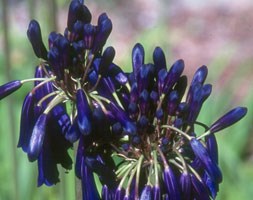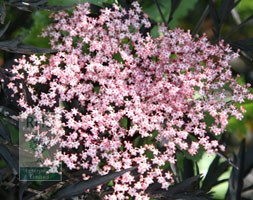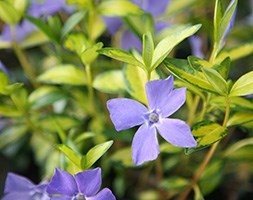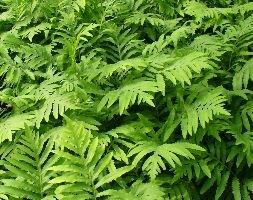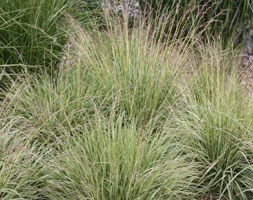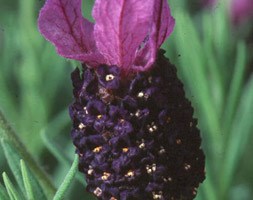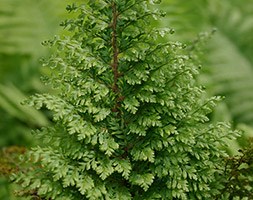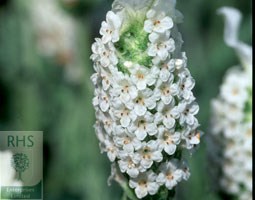New products at Crocus
by Sarah - December 11th, 2013.Filed under: Crocus, New Products.
Crocus just added these new items
Agapanthus inapertus subsp. pendulus ‘Graskop’ (African lily) £3.99
Position: full sun Soil: fertile, moist, well-drained soil (or John Innes no.3 compost for containers) Rate of growth: average Flowering period: July to September Hardiness: half hardy (will need protection in winter) This striking Agapanthus has a compact head of drooping, dark violet blue flowers in July. The buds as they emerge seem almost black and are held erect, slowly elongating and finally becoming pendulous as they open. A deciduous cultivar, which is tougher than the evergreens – and therefore hardy in most parts of the country in a sheltered, sunny spot. Garden care: Apply a balanced liquid fertiliser throughout the growing season. Keep reasonably dry during the winter and protect the crowns with a dry mulch in the autumn. Divide plants that have become too big in spring, but remember you will often get more flowers when the roots are constricted.
Sambucus nigra f. porphyrophylla ‘Eva’ (PBR) (elder) £3.99
Position: full sun or partial shade Soil: moderately fertile, humus-rich, moist, well-drained soil Rate of Growth: average Flowering period: June Flowers: pale pink Other features: almost black, dissected leaves and blackish red berries in autumn Hardiness: fully hardy This recent introduction has almost black, dissected foliage and from May to June pale pink, musk-scented blooms emerge from beautiful creamy-pink buds. It makes an excellent shrub for all styles of gardens and has the added bonus of having blackish-red berries in autumn which are attractive to birds. Garden care: To achieve the best foliage effect cut back to ground level each year in early spring and apply a generous 5-7cm (2-3in) mulch of well-rotted garden compost or manure around the base of the plant.
Vinca minor ‘Illumination’ (lesser periwinkle) £2.99
Position: full sun or partial shade Soil: any but very dry soil Rate of growth: average Flowering period: April to September Flower colour: mid-blue Hardiness: fully hardy Marvellous, mid-blue flowers from April to September and glossy, golden leaves with dark-green margins. This striking, variegated, evergreen plant is excellent groundcover for a small, sunny border. Introduced in 2001, the trailing stems are ideal fo r softening hard landscaping or for spilling over the edges of a hanging basket. Garden care: To prevent the plant from becoming invasive cut back any unwanted shoots in spring.
Onoclea sensibilis (sensitive fern) £2.99
Position: partial shade Soil: moist, fertile, humus-rich, preferably acid soil Rate of growth: average to fast-growing Hardiness: fully hardy Arching, finely divided triangular fronds are pinkish-bronze in spring, maturing to pale green. This delicate deciduous fern is perfect for a sheltered, water-side planting or a moist shady border. Best planted in humus-rich acid soil in light dappled shade, it’s aptly named since the fronds will scorch if exposed to too much sun. Garden care: Incorporate lots of well-rotted leaf mould or composted pine needles when planting. Ensure that the compost or soil is kept moist – water during dry spells.
Molinia caerulea subsp. caerulea ‘Variegata’ (variegated purple moor grass) £2.99
Position: full sun or partial shade Soil: any moist but well-drained, preferably acid to neutral soil Rate of growth: average Flowering period: May to September Hardiness: fully hardy Molinias are grown for their upright, delicate flowers that form a lacy veil in the border. They also thrive in sun and shade, which makes them particularly versatile. ‘Variegata’ has cream and pale green variegated leaves from which rise yellow flower stems with purple flower spikelets. In autumn the plant fades to a soft buff colour. With its compact habit and delicate flowerheads, this is an ideal ornamental grass for the middle of a perennial border, where the spikelets catch the breeze and act like a shimmering veil for other plants. A native of acid bogs, this deciduous grass will flourish on most soils as long as they are not too dry. Garden care: Cut back in early spring before the new foliage appears .
Lavandula ‘Fathead’ (lavender) £2.99
Position: full sun Soil: moderately fertile, well-drained soil Rate of growth: average Flowering period: May to July Hardiness: borderline hardy (needs winter protection in cold areas) Named after the fat, round flowerheads from which delicate, upright petals emerge like butterfly wings and flutter in the breeze, this French lavender is compact and goes on producing its pale plum flowers for several weeks from late spring. Like most French lavenders, it is earlier flowering than its English cousins, but associates well with them if you want to prolong the season of lavender in your garden. Because it only grows to 40cm, it is particularly useful for edging parterres or as a low hedge along a path, where its heady fragrance can be enjoyed. It is hardier than most French lavenders and will survive all but the most harshest of winters. The flower-spikes are also a magnet for bees and other nectar-loving insects. As it’s borderline hardy it is best grown in a container in colder areas of the country and should be over-wintered in a cool greenhouse or conservatory. Garden care: Cut back the stalks after the flowers have faded. Carefully trim back in April, taking care not to cut into old wood.
Ceanothus ‘Puget Blue’ (Californian lilac) £2.99
Position: full sun Soil: fertile, well-drai ned, neutral to alkaline soil Rate of growth: vigorous Flowering period: April to June Hardines s: frost hardy (needs winter protection in cold areas) In mid-sprin g, this spreading, evergreen shrub is an arresting sight, smothered in dense clu sters of dark blue flowers. It makes a superb specimen plant for a south or west -facing border among spring-flowering bulbs, and when has finished flowering, pr ovides an excellent foil for later-flowering deciduous shrubs and perennials. It needs a protected site, as the deeply veined, dark green leaves are easily scor ched by cold, drying winds. Garden care: Each yea r after the plant has flowered reduce the shoots by one third and apply a 5-7cm (2-3in) mulch of well-rotted organic matter around the base of the plant.
Polystichum setiferum ‘Plumosomultilobum’ (soft shield fern) £2.99
Position: full or partial shade Soil: fertile, humus-rich, well-drained soil Rate of growth: average Hardiness: fully hardy Soft, narrow, dark green fronds arranged in a distinctive shuttlecock-like shape. This handsome evergreen fern is perfect for a shady border with fertile, humus-rich, well-drained soil. Cutting back the foliage in early January allows the surrounding area to be underplanted with snowdrops, winter aconites or wood anemones. Garden care: Incorporate lots of well-rotted leaf mould, composted pine needles or garden compost into the planting hole.
Lavandula stoechas subsp. stoechas f. leucantha ‘Snowman’ (French lavender) £2.99
Position: full sun Soil: moderately fertile, well-drained soil Rate of growth: average Flowering period: June and July Hardiness: borderline hardy As the name suggests, this French lavender has spikes of pure white flowers, topped with distinctive white, butterfly-like tufts from late spring to summer and grey-green, aromatic leaves. It makes a striking feature planted en masse as a fragrant edging for a sunny, protected border, along a path or in a container. Like most French lavenders, this is earlier flowering than its English cousins, but associates well with them if you want to prolong the season of lavender in your garden. The flower-spikes are also a magnet for bees and other beneficial insects. In frost-prone areas it is best grown in a large container and over-wintered indoors. As it’s borderline hardy it is best grown in a container in colder areas of the country and should be over-wintered in a cool greenhouse or conservatory. Garden care: Cut back the stalks after the flowers have faded to retain a compact shape. Carefully trim back in April, taking care not to cut into old wood.







